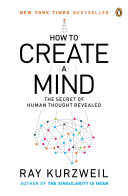

Ray Kurzweil presents the idea that the human brain serves as the ultimate model for artificial intelligence. He delves into the structure and function of the brain, emphasizing how understanding neural patterns and connections can lead to the development of advanced AI systems. Kurzweil explains that the brain's ability to learn, adapt, and process information can be replicated in machines by mimicking its neural architecture. He discusses the importance of neural networks and how they can be programmed to simulate human thought processes. This foundational idea sets the stage for the exploration of how we can create machines that think and learn like humans, ultimately leading to the development of more sophisticated AI technologies.
Continue readingOne of the central themes of the book is the concept of pattern recognition, which Kurzweil argues is the core of human intelligence. He explains that our brains are wired to identify patterns in the world around us, enabling us to make predictions and decisions based on past experiences. This ability to recognize patterns is what allows humans to learn and adapt to new situations. Kurzweil illustrates how this principle can be applied to AI, where algorithms are designed to detect patterns in data. He emphasizes that by enhancing AI's capacity for pattern recognition, we can create machines that not only understand data but also draw meaningful conclusions from it, thereby improving their decision-making capabilities.
Continue readingKurzweil discusses the concept of the Singularity, a point in the future when technological growth becomes uncontrollable and irreversible, resulting in unforeseeable changes to human civilization. He argues that as AI continues to evolve, we will reach a stage where machines surpass human intelligence. This idea raises significant ethical and philosophical questions about the relationship between humans and machines. Kurzweil suggests that the Singularity could lead to unprecedented advancements in health, productivity, and overall quality of life. However, he also acknowledges the potential risks associated with such powerful technology, urging a need for responsible development and governance to ensure that AI serves humanity positively.
Continue readingIn exploring the nature of intelligence, Kurzweil delves into the concept of consciousness and its role in human cognition. He examines various theories of consciousness and how they relate to the development of AI. Kurzweil posits that understanding consciousness is crucial for creating machines that can replicate human-like thinking. He discusses the challenges of defining consciousness and how it can be measured or simulated in AI systems. This exploration raises important questions about what it means to be sentient and whether machines can ever truly achieve a state of consciousness akin to that of humans. Kurzweil's insights encourage readers to consider the implications of creating conscious machines and the ethical responsibilities that come with it.
Continue readingKurzweil envisions a future where humans and machines coexist and collaborate seamlessly. He discusses the potential for enhanced human capabilities through technology, such as brain-computer interfaces that allow for direct communication between the brain and machines. This idea of merging human intelligence with artificial intelligence presents exciting possibilities for improving cognitive functions, memory, and even creativity. Kurzweil argues that as we develop more intuitive interfaces and integrate AI into our daily lives, the boundaries between human and machine will blur, leading to a new era of collaboration that could enhance productivity and innovation.
Continue readingThroughout the book, Kurzweil emphasizes the importance of ethical considerations in the development of AI. He acknowledges the potential dangers of creating superintelligent machines and stresses the need for guidelines and regulations to ensure that AI is developed responsibly. Kurzweil advocates for a proactive approach to addressing ethical dilemmas, such as bias in algorithms, privacy concerns, and the potential for job displacement due to automation. He encourages technologists and policymakers to work together to create frameworks that promote fairness, transparency, and accountability in AI systems, ensuring that the benefits of technology are distributed equitably across society.
Continue readingKurzweil underscores the necessity of lifelong learning in an era of rapid technological change. He argues that as AI continues to evolve, individuals must adapt by continuously updating their skills and knowledge. This concept not only applies to professionals in the tech industry but also to anyone who wants to thrive in a future dominated by AI. Kurzweil provides insights into how education systems can evolve to foster a culture of continuous learning, encouraging innovation and adaptability. By embracing lifelong learning, individuals can better prepare themselves for the challenges and opportunities presented by advancements in technology.
Continue reading